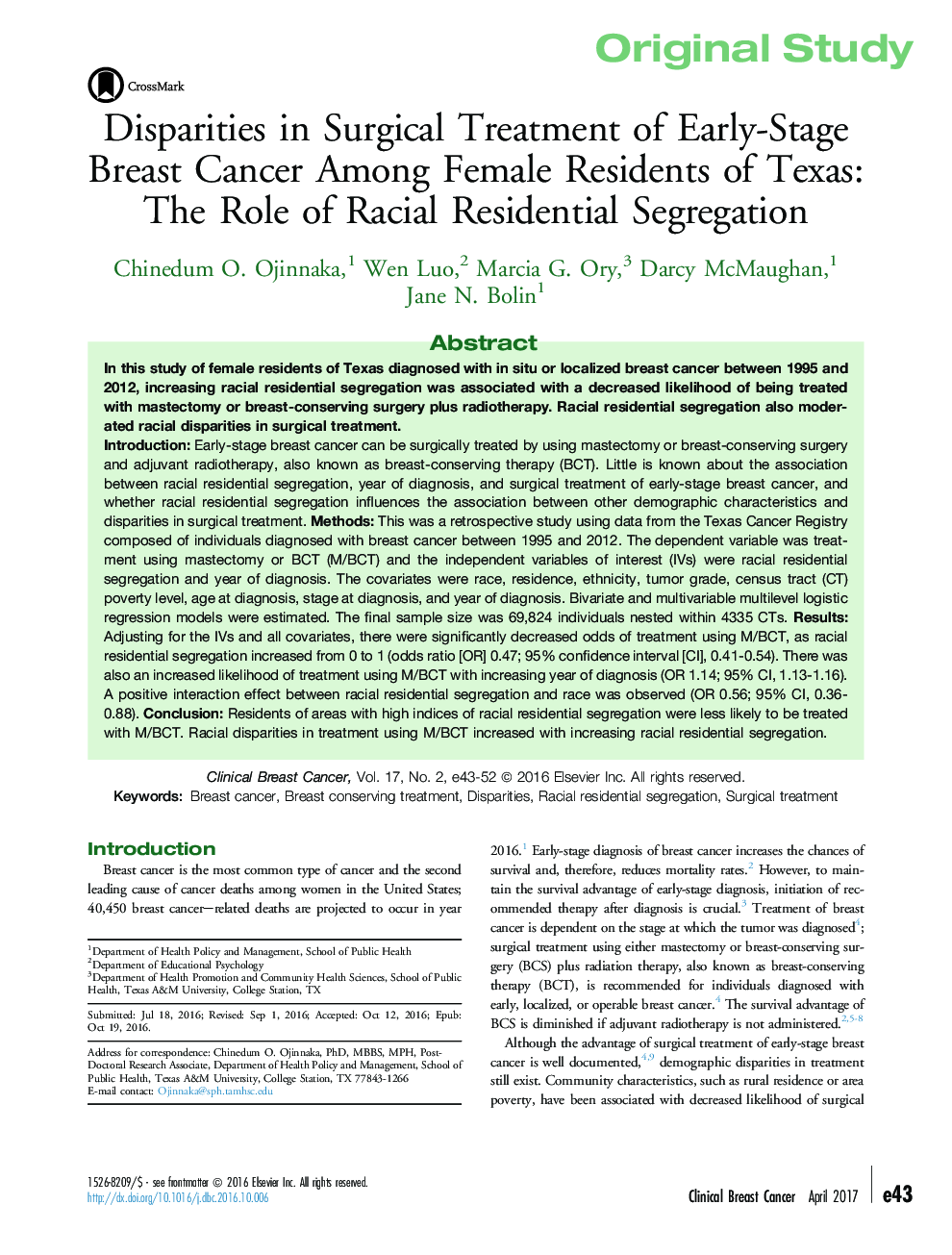| کد مقاله | کد نشریه | سال انتشار | مقاله انگلیسی | نسخه تمام متن |
|---|---|---|---|---|
| 5580806 | 1404184 | 2017 | 10 صفحه PDF | دانلود رایگان |
IntroductionEarly-stage breast cancer can be surgically treated by using mastectomy or breast-conserving surgery and adjuvant radiotherapy, also known as breast-conserving therapy (BCT). Little is known about the association between racial residential segregation, year of diagnosis, and surgical treatment of early-stage breast cancer, and whether racial residential segregation influences the association between other demographic characteristics and disparities in surgical treatment.MethodsThis was a retrospective study using data from the Texas Cancer Registry composed of individuals diagnosed with breast cancer between 1995 and 2012. The dependent variable was treatment using mastectomy or BCT (M/BCT) and the independent variables of interest (IVs) were racial residential segregation and year of diagnosis. The covariates were race, residence, ethnicity, tumor grade, census tract (CT) poverty level, age at diagnosis, stage at diagnosis, and year of diagnosis. Bivariate and multivariable multilevel logistic regression models were estimated. The final sample size was 69,824 individuals nested within 4335 CTs.ResultsAdjusting for the IVs and all covariates, there were significantly decreased odds of treatment using M/BCT, as racial residential segregation increased from 0 to 1 (odds ratio [OR] 0.47; 95% confidence interval [CI], 0.41-0.54). There was also an increased likelihood of treatment using M/BCT with increasing year of diagnosis (OR 1.14; 95% CI, 1.13-1.16). A positive interaction effect between racial residential segregation and race was observed (OR 0.56; 95% CI, 0.36-0.88).ConclusionResidents of areas with high indices of racial residential segregation were less likely to be treated with M/BCT. Racial disparities in treatment using M/BCT increased with increasing racial residential segregation.
Journal: Clinical Breast Cancer - Volume 17, Issue 2, April 2017, Pages e43-e52
